Bow Down to Four Kings
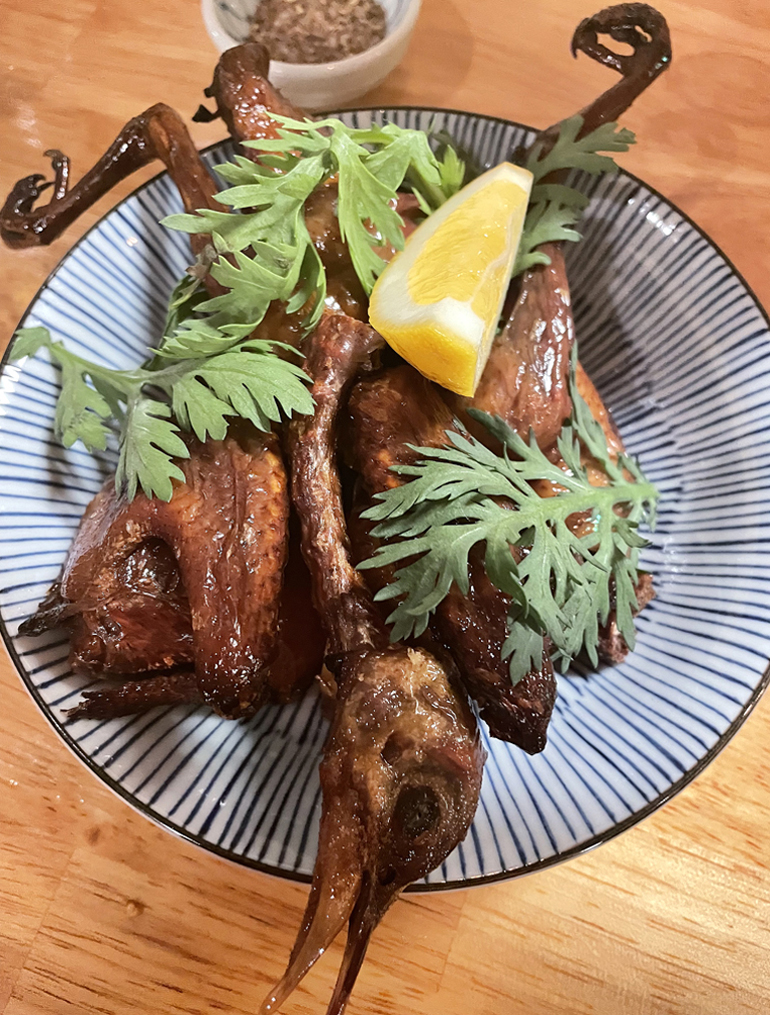
The food of my childhood has been stunningly reinvigorated at the new Four Kings in San Francisco’s Chinatown.
If you’re Chinese American and of Cantonese heritage like myself, one taste of the dishes here will take you back nostalgically to many a celebratory Chinese banquet meal of long ago, as well as just plain ol’ homey weeknight gatherings with family at Formica-topped tables at local hole-in-the-wall joints.
Four Kings, which officially opens to the public on March 14, is the brainchild of chefs Michael Long and Franky Ho, former sous chef and chef de cuisine, respectively, of Michelin-starred Mister Jiu’s a block away. The duo, along with Millie Boonkokua, general manager of Liholiho Yacht Club in San Francisco, and Long’s wife, Lucy Li, an accountant, pooled their money along with that from friends and family to open this brick-and-mortar, following a series of sold-out pop-ups last year.

Last week, I had a chance to snag an early pre-opening reservation at the u-shaped counter that surrounds the open-kitchen — the best seats in the house if you enjoy seeing all the action up close.
The four partners did as much of the work, themselves, including painting and refinishing the tables and chairs that were left over from the former Slurp Ramen. The decor is fun and kitschy with lucky cat statues galore, anime figurines, and posters and photos of Hong Kong actor-singer superstars Jacky Cheung, Andy Lau, Leon Lai and Aaron Kwok, known as the “Four Heavenly Kings,” which inspired the restaurant’s name.
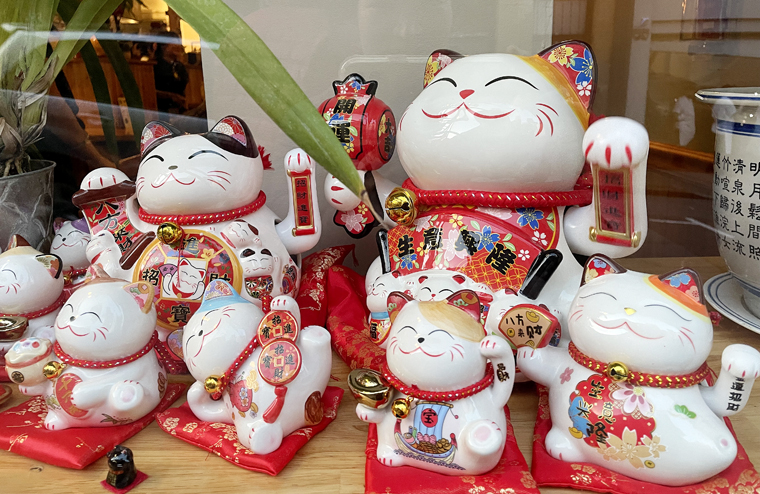

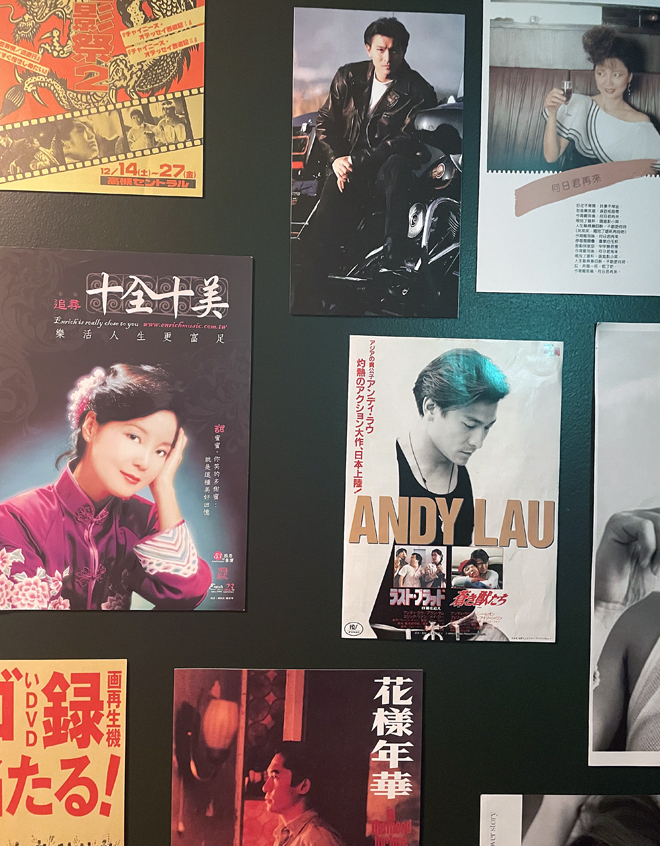
The menu is reminiscent of a Japanese comic book, what with its splash of color and whimsical illustrations. The dishes, which take inspiration from Hong Kong cafe fare, are meant for sharing, with mostly small- and medium-sized plates, plus two larger-format ones.
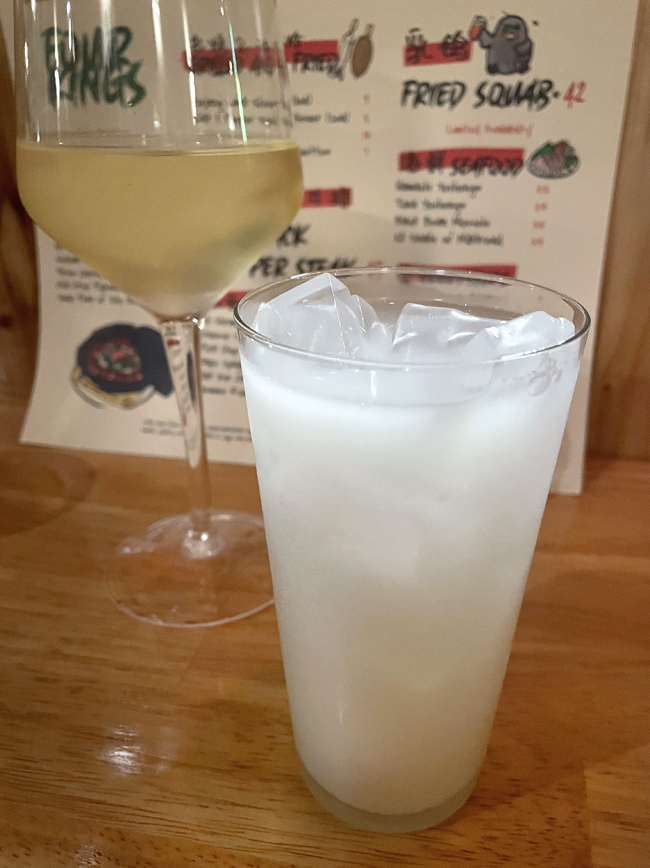
There’s shochu and sake by the carafe or bottle, along with beers, wines by the glass, and four types of tea. The Chinese Almond Milk Highball ($11) is delightful — a blended, lightly milky, effervescent drink on the rocks that gets its potency from shochu and its almond taste from apricot kernels. It’s like a less sweet, gentle tasting Chinese almond jello in fizzy form that goes down wickedly smoothly.
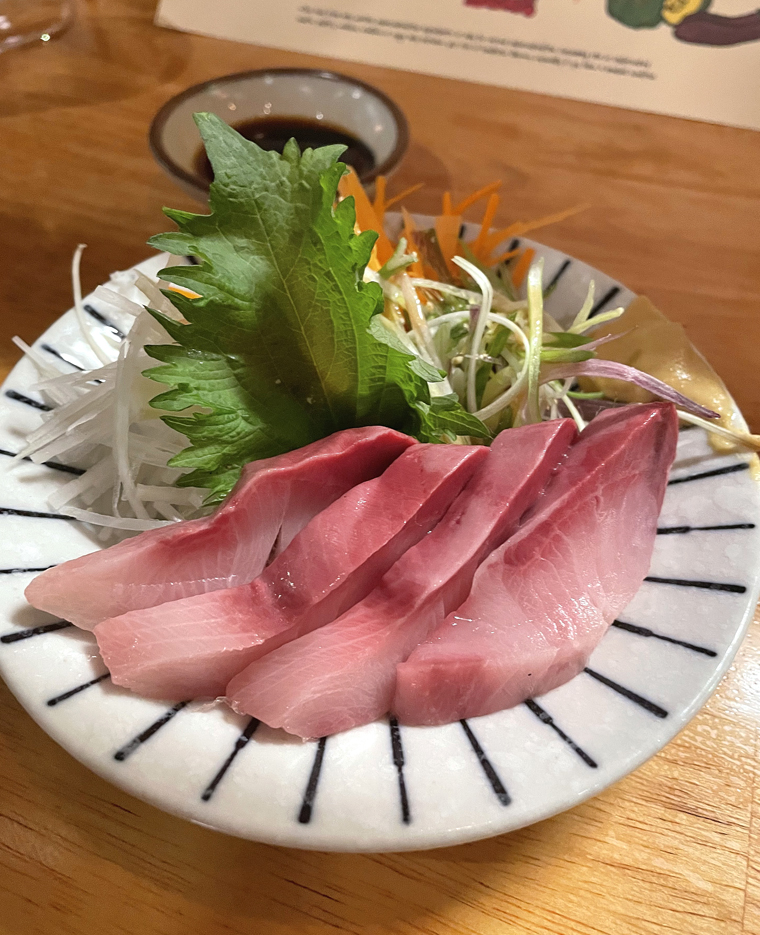
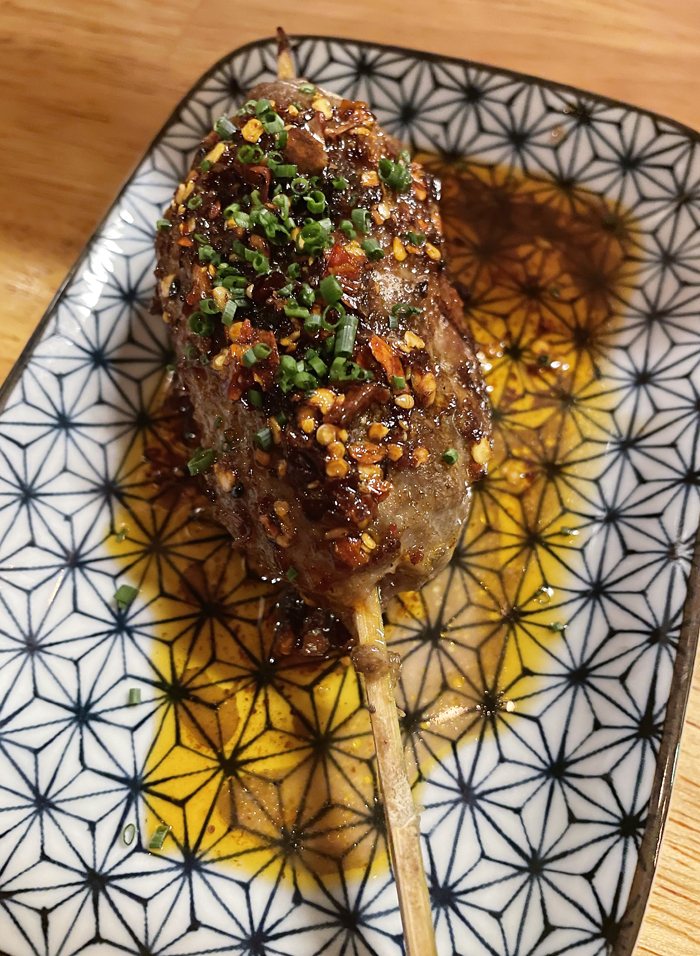
Hamachi yusheng ($22) is akin to Japanese sashimi, only instead of green wasabi, there’s a dab of Chinese hot mustard on the side of the plate, along with a small dish of soy sauce for dipping. The slices are draped on a mound of finely julienned daikon, carrots, and green onions fragrant with sesame oil. This was some of the butteriest tasting raw hamachi I’ve had in a while.
The Xinjiang lamb skewer ($9 for one) arrives as a football-shaped, lamb meatball that’s incredibly juicy, and redolent of cumin, with the warmth of chili, and the tingle of Sichuan pepper.
Green beans ($14) get smoky and blistered, then ever so spicy and salty from chiuchow olive sauce, a mix of Chinese olives, mustard greens, soy sauce, and oil. It’s a dish that begs for a dish of rice to enjoy with it.
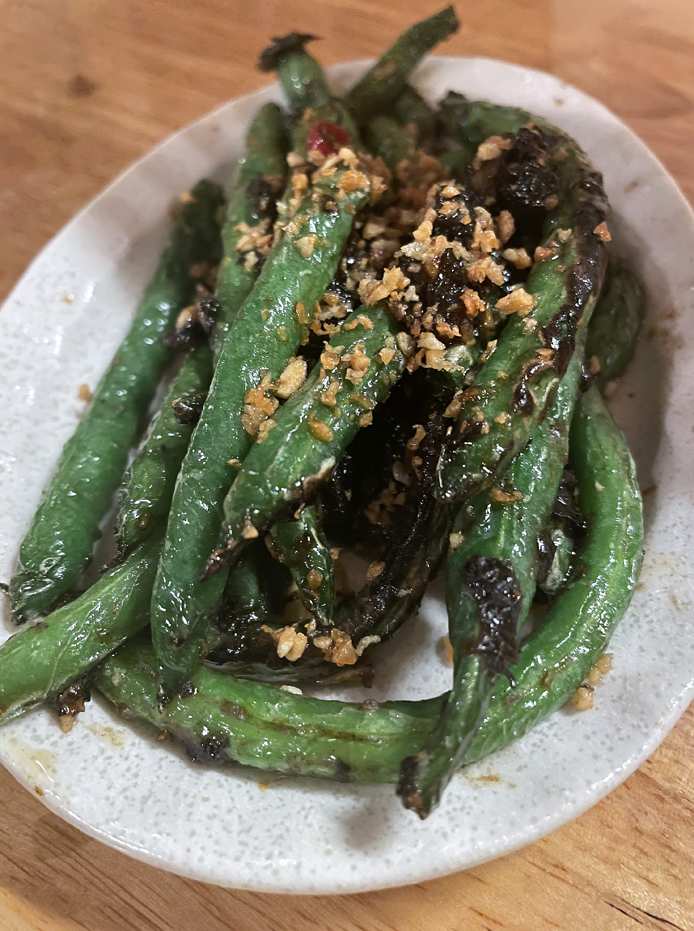
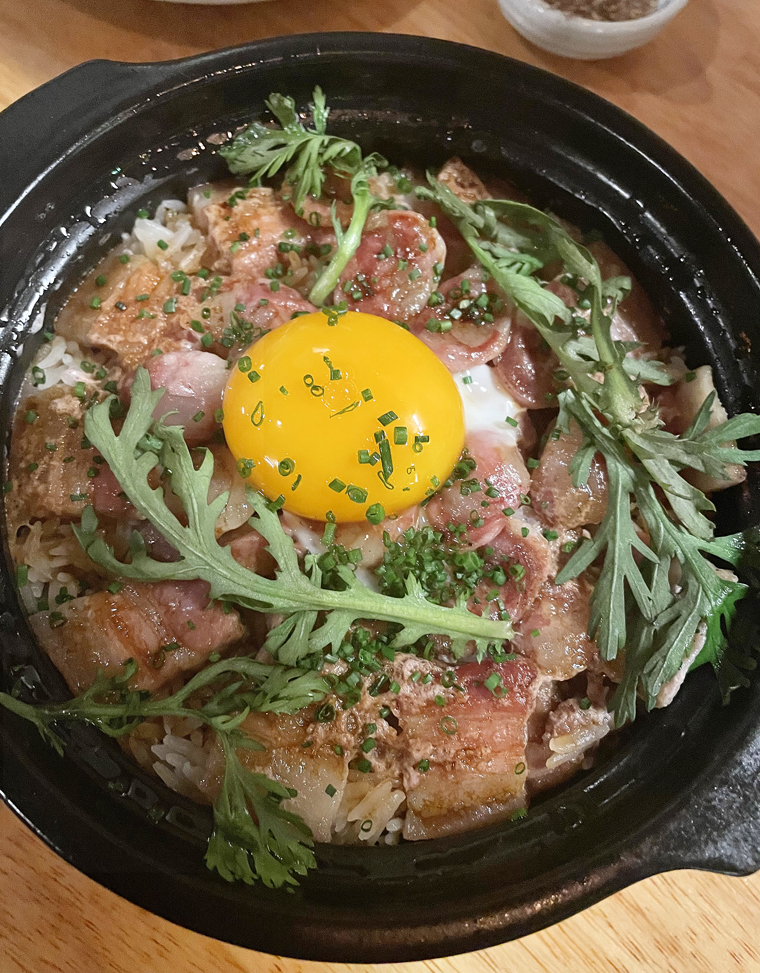
So, do save some of those green beans if you happen to order the claypot rice ($22) that comes to the table sizzling hot with a yolk in the center to mix in. Long and Ho are justly proud of this dish because they top this classic Cantonese dish with their own Chinese sausage and bacon, both made in-house, which have a wonderful sweet porky flavor. There is plenty of crispy rice bits on the bottom and sides of the pot; you just have to use a little arm muscle to scrape it off to savor every bit.
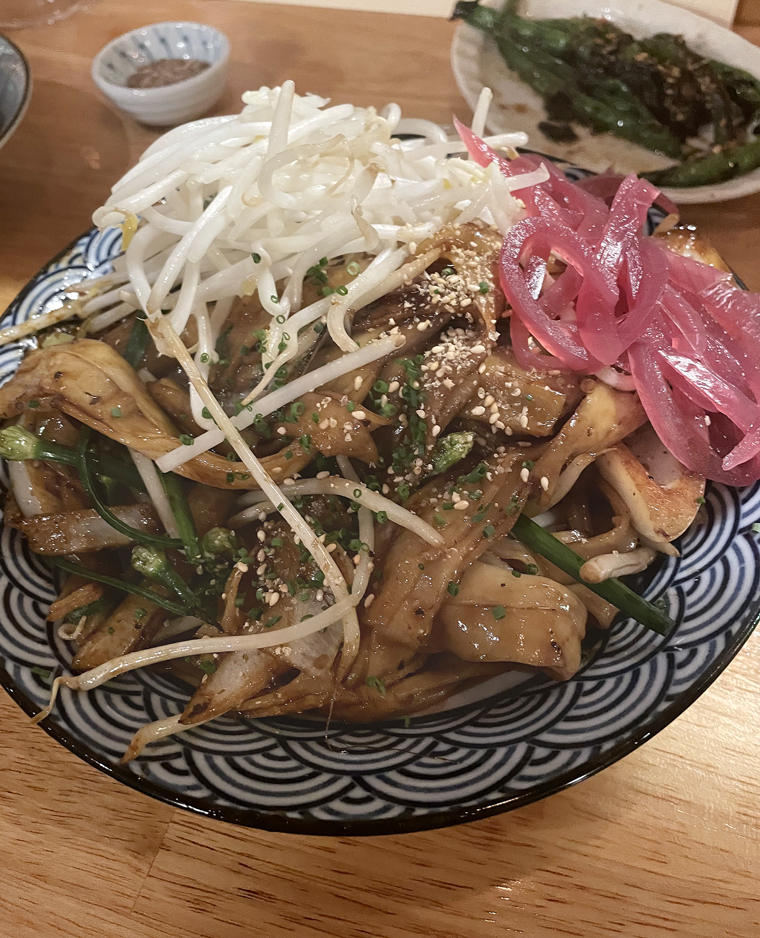
It’s a good bet you’ve not had beef chow fun ($23) like this. The supple chewy rice noodles come from a local Chinatown bakery, and turn lush tasting when stir-fried in beef fat. You’ll have to dig around the jumble of noodles, garlic chives, and onions to discover about four cubes of flat iron steak that are wonderfully succulent. For me, what really made the dish were the slivers of pickled red onion that garnished the top. They added a lively burst of tang and perkiness to this rich, hearty dish.
The piece de resistance is the fried squab ($42) which takes a week to prepare. The tiny birds are first marinated in five spice and other seasonings, blanched to tighten its skin, then brushed with malt sugar and hung for days to dry age. They are fried to order, and you can tell when one is being prepared when you hear a ferocious bubbling of oil emanating from the kitchen. At this point, only 15 squabs are available to order each night, though the chefs hope to increase that number eventually.
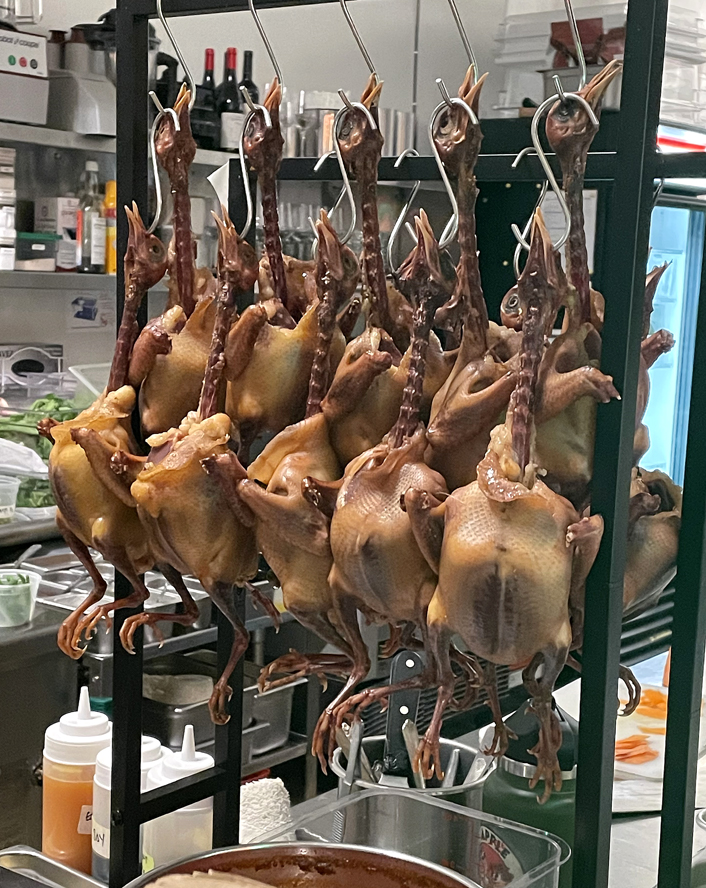
So, do yourself a favor, come early, and make sure you get one. Then, get ready to get down and dirty with it. The squab is served whole, meaning its talons and head are still attached. The little bird is cut into quarters. Since there are only chopsticks at your place setting, expect to resort to your fingers to tear into it all. And nope, no wet ones or hot towels come with, so it will get messy.
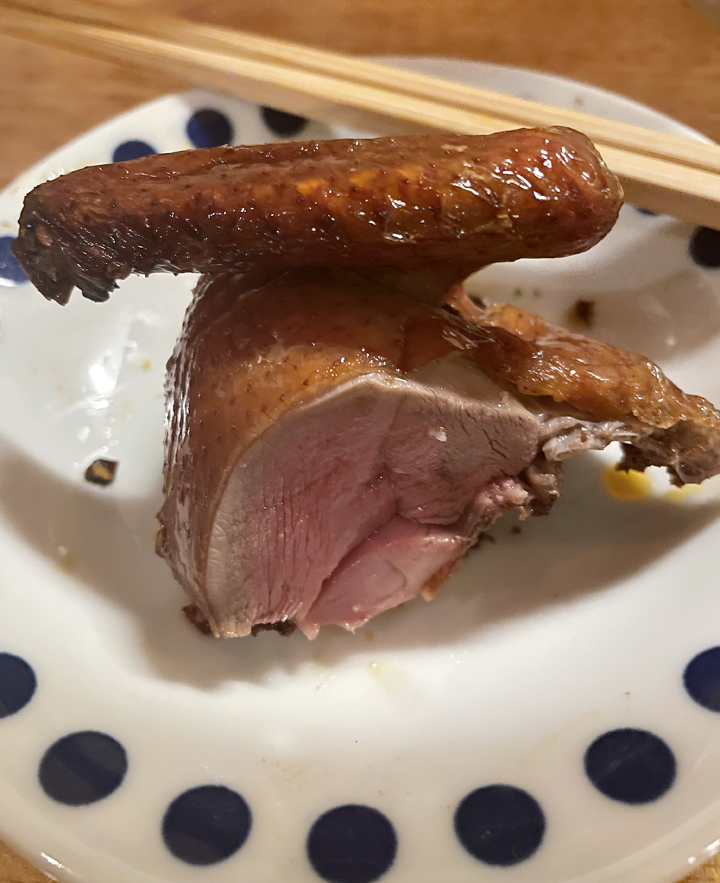
But it is so worth it. I remember reminiscing with Long about how fried squab was a special dish you only got at a Chinatown restaurant for a festive banquet-style meal. Five Kings’ version is hands down the best fried squab I’ve ever had. It is beyond juicy and succulent. Every iota of fat has rendered underneath the skin so that it crisps up like a potato chip. The flesh has such concentrated dark meat flavor. A little dish of salt and pepper seasoned with five spice and Sichuan peppercorns is served off to the side to add a pinch or two, if you like.
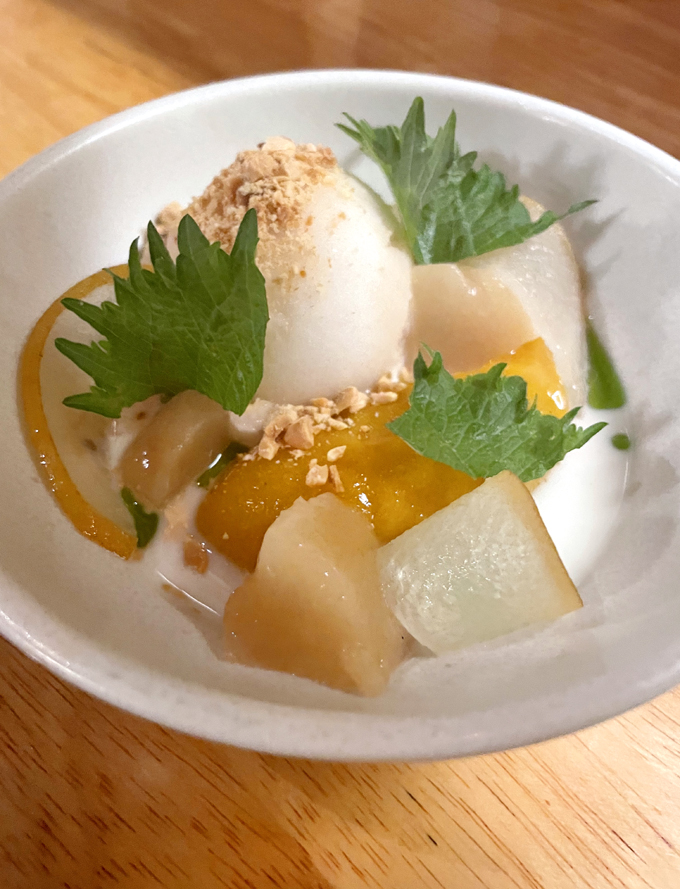
For dessert, mango pudding ($10) makes for an elegant and refreshing finale. Rather than the traditional soup bowl of mango gelatin that plays up the sweet and dampens down the fruit flavor, this version comes as a firm yet wobbly slice that has much more mango flavor. It’s served with an Asian pear sorbet, fresh slices of Asian pear, and shiso leaves. It’s the perfect way to cool off the palate if you’ve had a lot of spice.
Dining at Four Kings was like taking a trip down memory lane — and returning with a whole new perspective.
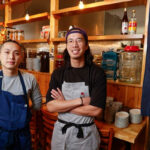

Now that sounds like a real winner. The Xinjiang lamb skewer and blistered green beans with the olive sauce would make me happy,
Hi Karen: The food is just spectacular here. I can’t wait to try more.